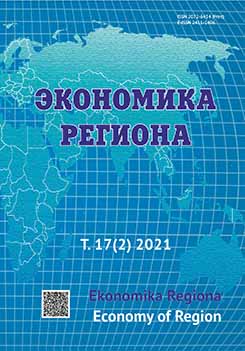Examining Regional Polycentricity: Does It Really Matter in Transitional Russia?
Examining Regional Polycentricity: Does It Really Matter in Transitional Russia?
Author(s): Dina Kh. KRASNOSELSKAYASubject(s): Economy, National Economy, Labor relations, Economic policy, Socio-Economic Research, Transport / Logistics
Published by: Институт экономики Уральского отделения Российской академии наук
Keywords: polycentricity; spatial autocorrelation; employment density; economic development; social infrastructure; road infrastructure;
Summary/Abstract: In the normative agenda of European countries, polycentricity is considered a desirable spatial form for encouraging regional competitiveness and territorial cohesion. Since the collapse of the Soviet Union, Russian regions have undergone various reforms aimed at reducing tremendous social-economic differentiation, but the results of applied strategic plans were moderate. According to the existing Spatial Development Strategy of the Russian Federation, polycentric patterns are encouraged to increase the quality of economic space and its connectivity. Using statistical data from 2017 for 271 Russian municipalities, the research addresses the impact of socio-economic determinants and road infrastructure on the spatial structure. The Republic of Bashkortostan and six adjacent regions served as a case study. Conducted regression analysis identified key variables that influence polycentricity, upon which global and local Moran’s indexes were calculated to reveal the potential for intraregional cooperation. Research findings showed that polycentricity in its morphologic nature is positively determined by economic variables (namely, the value of shipped goods, performed works and services) and social infrastructure (the number of doctors per 10 000 inhabitants) while spatial autocorrelation is weak both within and beyond regional boundaries. The results may be used for formulating regional policies, infrastructure programmes, and spatial planning.
Journal: Экономика региона
- Issue Year: 17/2021
- Issue No: 2
- Page Range: 389-401
- Page Count: 13
- Language: English

